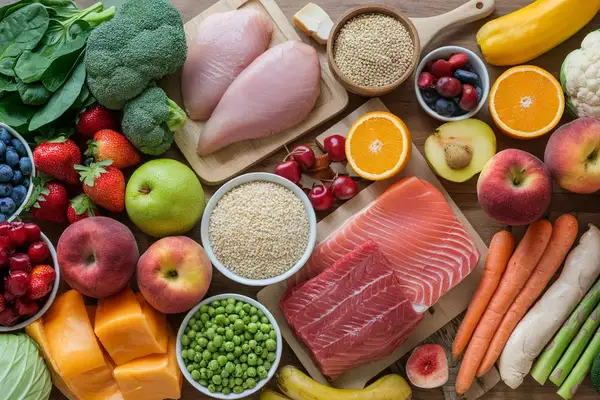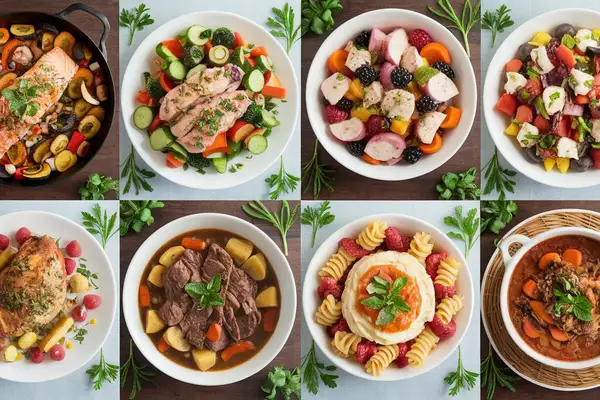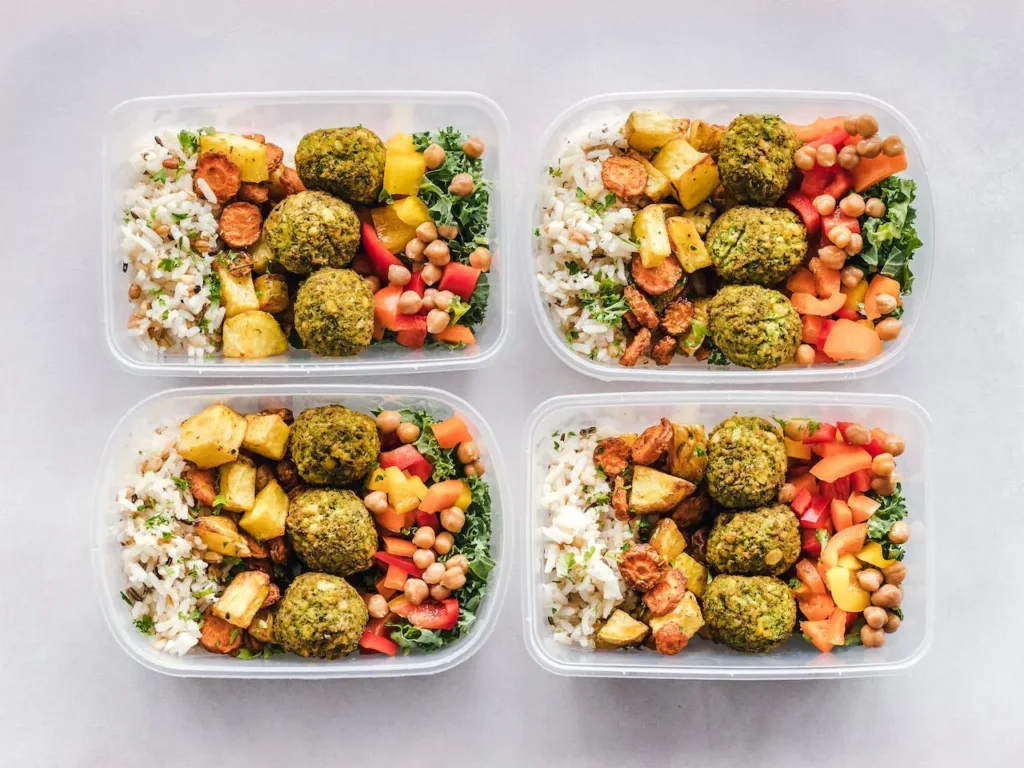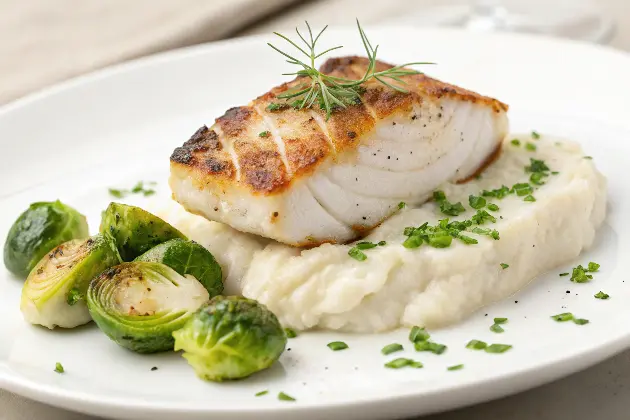7-Day Anemia Diet Plan: Anemia Foods to Eat and Avoid
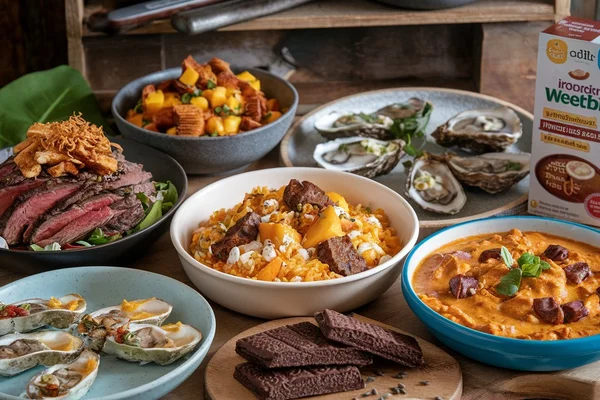
This post may contain affiliate links, meaning I may earn a commission if you make a purchase, at no extra cost to you. I only recommend products I trust. Thank you for your support.
Anemia is a common health condition that affects millions of people worldwide. If you’ve been diagnosed with anemia or suspect you might be iron deficient, you’re not alone.
The good news is that with the right anemia diet and lifestyle changes, you can effectively manage and even overcome this condition.
This 7-day anemia diet plan is designed to help you get plenty of iron from natural sources with a focus on incorporating foods rich in iron and complementary nutrients like vitamin C, which enhance iron absorption.
What is Anemia?
Before we dive into our meal plan, let’s quickly recap what anemia is and why it’s important to address it.
Anemia is a condition where you don’t have enough healthy red blood cells to carry adequate oxygen to your body’s tissues. This can make you feel tired, weak, or short of breath.
The most common type is iron deficiency anemia, which occurs when your body doesn’t have enough iron to produce hemoglobin, the protein in red blood cells that carries oxygen.
Iron deficiency anemia is mainly caused by not getting enough iron in your diet or losing iron due to heavy periods or certain medical conditions.
Signs of Iron Deficiency
Recognizing the signs of iron deficiency is crucial for early intervention. Some common symptoms include:
- Fatigue and weakness
- Pale or yellowish skin
- Irregular heartbeats
- Shortness of breath
- Dizziness
- Cold hands and feet
- Chest pain
- Headaches
Iron Rich Foods for Anemia
The Iron content for these foods can vary based on cooking methods and food sources. It’s essential to combine iron rich foods with those high in vitamin C to enhance absorption.
Here’s the list of iron rich foods for anemia along with their approximate iron content:
Animal-Based Sources (Heme Iron)
Meats:
- Lean Beef (85 grams, cooked): 3.06 mg per 100 grams
- Lamb (85 grams, cooked): 2.47 mg per 100 grams
- Pork (85 grams, cooked): 1.06 mg per 100 grams
- Chicken (dark meat, 85 grams, cooked): 1.29 mg per 100 grams
- Turkey (85 grams, cooked): 1.65 mg per 100 grams
Seafood:
- Oysters (6 medium): 6.94 mg per 100 grams
- Clams (85 grams, cooked): 27.94 mg per 100 grams
- Mussels (85 grams, cooked): 6.71 mg per 100 grams
- Sardines (85 grams, canned): 2.94 mg per 100 grams
- Shrimp (85 grams, cooked): 1.76 mg per 100 grams
Poultry:
- Duck (85 grams, cooked): 2.94 mg per 100 grams
- Goose (85 grams, cooked): 4.12 mg per 100 grams
- Egg (1 large, boiled): 1.2 mg per 100 grams
Plant-Based Sources (Non-Heme Iron)
It is advisable to pair these foods with vitamin C to boost iron absorption from plant-based sources.
Legumes:
- Lentils (1 cup, cooked): 6.6 mg per 100 grams
- Chickpeas (1 cup, cooked): 4.7 mg per 100 grams
- Black Beans (1 cup, cooked): 3.6 mg per 100 grams
- Kidney Beans (1 cup, cooked): 3.9 mg per 100 grams
- Soybeans (tofu, 1/2 cup, firm): 3.9 mg per 100 grams
- Green Peas (1 cup, cooked): ~2.5 mg per 100 grams
Nuts and Seeds:
- Pumpkin Seeds (1 oz): 2.5 mg per 100 grams
- Cashews (1 oz): 1.9 mg per 100 grams
- Almonds (1 oz): 1.1 mg per 100 grams
- Hemp Seeds (3 tbsp): 2.5 mg per 100 grams
- Sunflower Seeds (1 oz): 1.4 mg per 100 grams
Whole Grains:
- Quinoa (1 cup, cooked): 2.8 mg per 100 grams
- Oats (1 cup, cooked): 1.7 mg per 100 grams
- Whole Grain Pasta (1 cup, cooked): 1.2 mg per 100 grams
- Barley (1 cup, cooked): 1.1 mg per 100 grams
- Brown Rice (1 cup, cooked): 0.8 mg per 100 grams
- Whole Wheat Bread (1 slice): 0.7 mg per 100 grams
Vegetables:
- Spinach (1 cup, cooked): 6.4 mg per 100 grams
- Swiss Chard (1 cup, cooked): 4.0 mg per 100 grams
- Kale (1 cup, cooked): 1.2 mg per 100 grams
- Broccoli (1 cup, cooked): 1.0 mg per 100 grams
- Brussels Sprouts (1 cup, cooked): 1.2 mg per 100 grams
- Beet Greens (1 cup, cooked): 2.0 mg per 100 grams
Dried Fruits
- Dried Apricots (1 cup): 3.5 mg per 100 grams
- Dried Figs (1 cup): 3.0 mg per 100 grams
- Raisins (1 cup): 1.2 mg per 100 grams
- Dried Peaches (1 cup): 1.0 mg per 100 grams
- Dried Prunes (1 cup): 0.9 mg per 100 grams
Fortified Foods
Cereals:
- Iron-Fortified Breakfast Cereals (1 serving, varies): 18 mg per 100 grams
- Overnight Oatmeal (1 cup, cooked): 1.1 mg per 100 grams
Breads:
- Iron-Fortified Whole Grain Bread (1 slice): 0.9 – 1.2 mg per 100 grams
Fruits (High in Vitamin C, Which Enhances Iron Absorption)
Citrus Fruits:
- Tangerines (1 medium): 0.2 mg per 100 grams
- Oranges (1 medium): 0.1 mg per 100 grams
- Grapefruits (1 medium): 0.1 mg per 100 grams
- Lemons (1 medium): 0.1 mg per 100 grams
Berries:
- Blackberries (1 cup): 0.9 mg per 100 grams
- Strawberries (1 cup): 0.6 mg per 100 grams
- Raspberries (1 cup): 0.5 mg per 100 grams
Other Fruits:
- Bell Peppers (1 cup, raw): 0.5 mg per 100 grams
- Tomatoes (1 cup, raw): 0.5 mg per 100 grams
- Pineapple (1 cup): 0.4 mg per 100 grams
- Kiwi (1 medium): 0.3 mg per 100 grams
- Papaya (1 cup): 0.2 mg per 100 grams
- Melons (1 cup): 0.2 mg per 100 grams
- Mangoes (1 medium): 0.2 mg per 100 grams
Anemia Foods to Avoid or Limit
If you have anemia, there are certain foods that can inhibit iron absorption or make it more difficult for your body to absorb enough iron.
If consuming these foods, try to do so at least a few hours apart from iron rich meals to minimize absorption interference.
Here’s a list of foods to avoid or limit to help improve iron levels:
Foods High in Calcium
Calcium can interfere with iron absorption, especially from plant sources. Avoid calcium supplements or calcium-rich foods during meals with iron.
- Cheese
- Milk
- Yogurt
- Fortified plant milks
- Supplements containing calcium
Caffeinated Drinks
Coffee and tea contain polyphenols and tannins, which can reduce iron absorption. Drink coffee or tea between meals rather than with meals to minimize their impact on iron absorption.
- Coffee
- Black tea
- Green tea
Eggs
Egg yolks contain a protein (phosvitin) that can bind to iron and reduce its absorption. Limit egg consumption around meals where you’re trying to maximize iron intake.
- Whole eggs
- Egg yolk-based dishes
High-Oxalate Foods
Oxalates can reduce the absorption of non-heme iron (iron from plant sources).
Since most of these foods are high in iron and can be beneficial for an anemia diet, pairing high-oxalate foods with vitamin C-rich foods can help boost iron absorption.
- Spinach
- Swiss chard
- Beet greens
- Nuts and seeds (almonds, cashews, peanuts)
- Soy products (tofu, tempeh)
- Beets and sweet potatoes
Processed Foods
Processed foods are often low in nutrients, including iron, and can replace more nutritious foods in your diet, leading to poor overall nutrition. They may also contain additives that can interfere with nutrient absorption.
- Fast food (burgers, fries, processed meats)
- Packaged snacks (chips, crackers, cookies)
- Ready-to-eat meals (frozen dinners, instant noodles)
- Processed meats (hot dogs, sausages, deli meats)
Sugary Foods
Sugary foods are high in calories but offer little to no nutritional value. Excessive sugar can displace nutrient-rich foods from your diet and contribute to energy crashes, which is problematic for someone with anemia.
- Soda and sugary drinks
- Candy and sweets
- Pastries, cakes, and doughnuts
- Sugary breakfast cereals
High-Phytate Foods
Phytates, found in some plant-based foods, can bind to iron and reduce its absorption. Soaking, fermenting, or sprouting these foods can reduce their phytate content.
- Grains: especially if not soaked or sprouted
- Legumes: unless soaked overnight and thoroughly cooked
- Nuts and Seeds: unless soaked/sprouted
7-Day Anemia Diet Plan (Anemia Diet Menu)
This 7-day anemia diet plan will boost your iron levels with balanced and carefully curated iron rich meals and recipes along with iron rich foods for anemia.
The anemia diet menu includes a variety of both heme (animal-based) and non-heme (plant-based) iron sources, ensuring a balanced intake of foods high in iron and vitamin C, which enhances iron absorption.
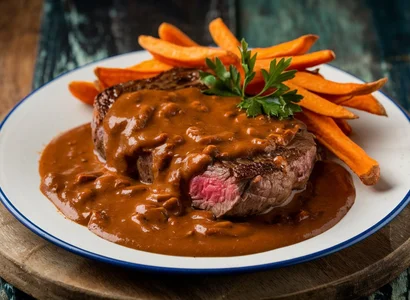
Day 1
Breakfast:
- Spinach Omelet with Bell Peppers: Whisk eggs, sauté spinach and bell peppers, then cook in a skillet until set and serve with a side of sliced kiwi. (2 eggs, 1 cup spinach, ½ bell pepper, 1 medium kiwi)
Lunch:
- Steaks with Goulash Sauce & Sweet Potato Fries: Grill steak and serve with goulash sauce, sweet potato fries, and sautéed collard greens and a side of sautéed bell peppers. (6 oz steak, 1 cup sweet potatoes, 1 cup collard greens, 1 cup sautéed bell peppers)
Dinner:
- Grilled Salmon with Roasted Sweet Potato and Steamed Asparagus: Grill salmon fillets, roast sweet potatoes in olive oil, and steam asparagus until tender, served with a side of steamed broccoli. (6 oz salmon, 1 medium sweet potato, 6 spears of asparagus, 1 cup steamed broccoli)
- Mixed Green Salad with Lemon Vinaigrette: Toss mixed greens with a homemade lemon vinaigrette made from fresh lemon juice, olive oil, and herbs. (2 cups mixed greens, 1 tbsp olive oil, 1 tsp lemon juice)
Snacks:
- Dark Chocolate Weetbix Slices: Mix crushed Weetbix with dark chocolate and dried fruit, chill until set. (2 Weetbix, 50g dark chocolate)
- Carrot Cake Energy Bites: Energy-packed bites made with carrots, oats, and dates. (1 cup oats, 1 carrot, 4 dates)
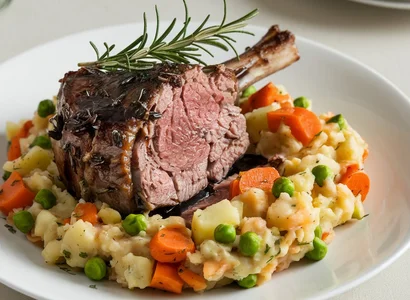
Day 2
Breakfast:
- Quinoa and Black Bean Breakfast Burrito: Combine cooked quinoa, black beans, and scrambled eggs in a whole wheat wrap and serve with a side of sliced guava. (½ cup quinoa, ½ cup black beans, 2 eggs, 1 medium guava)
Lunch:
- Rosemary Balsamic Lamb with Vegetable Mash: Grill lamb chops with rosemary and balsamic, serve with mashed root vegetables and a side of tomatoes. (6 oz lamb, 1 cup mashed vegetables, 1 cup raw tomatoes)
Dinner:
- Oysters with Chili & Ginger Dressing: Serve freshly shucked oysters with a chili-ginger sauce for a flavorful, iron-rich meal and pair with a bowl of pineapples. (8 oysters, 1 tsp chili, 1 tsp ginger, 1 cup pineapple)
- Vegan Lentil Stew: Simmer lentils with carrots, potatoes, and spinach in vegetable broth until tender and serve with a side of raspberries. (1 cup lentils, 1 cup spinach, 1 carrot, 1 cup raspberries)
Snacks:
- Carrot Cake Energy Bites: Blend oats, carrots, dates, and cinnamon, roll into bite-sized balls. (1 cup oats, 1 carrot, 4 dates)
- Cauliflower Cheese Egg Muffins: Whisk eggs with cheese and cauliflower, bake in muffin tins. (2 eggs, 1 cup cauliflower)
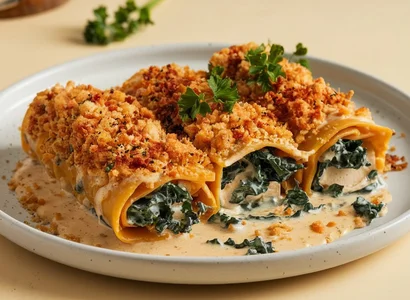
Day 3
Breakfast:
- Iron-Fortified Cereal with Banana, Almond Milk, and Pumpkin Seeds: Pour almond milk over fortified cereal, top with banana slices and pumpkin seeds. (1 cup cereal, 1 banana, 1 tbsp pumpkin seeds)
Lunch:
- Tofu & Kale Cannelloni: Stuff cannelloni with tofu and kale, bake in tomato sauce, and sprinkle with nutritional yeast and serve with a side of bell peppers. (1 cup tofu, 2 cups kale, 4 cannelloni tubes, 1 cup raw bell peppers)
- Mussels with Chorizo, Beans & Cavolo Nero: Steam mussels, sauté with chorizo, beans, and cavolo nero for a savory dish and serve with a side of strawberries. (1 cup mussels, ¼ cup chorizo, 1 cup cavolo nero, 1 cup strawberries)
Dinner:
- Lamb & Squash Biryani with Cucumber Raita: Cook lamb and squash with spices and rice, serve with cucumber raita and serve with a side of papaya. (6 oz lamb, 1 cup squash, 1 cup rice, 1 cup papaya)
Snacks:
- Baked Sweet Potato Cookies: Soft cookies made from mashed sweet potato and oats. (½ cup sweet potato, ½ cup oats)
- Beetroot Aloo Cutlet: Mash beetroot and potatoes, form into patties, and pan-fry until crispy. (1 beetroot, 1 potato)
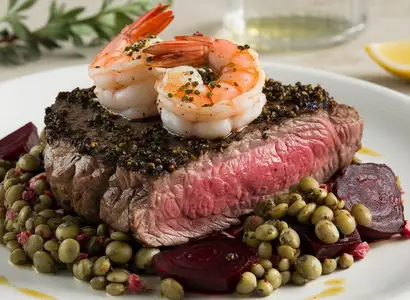
Day 4
Breakfast:
- Breakfast Smoothie: Blend spinach, banana, mango, mixed berries, Greek yogurt, and almond milk. (1 cup spinach, 1 banana, 1 medium ripe mango, ½ cup berries, ½ cup Greek yogurt)
Lunch:
- Steak with Shrimp, Beetroot, Horseradish & Lentil Salad: Grill steak and shrimp, serve with beetroot, horseradish dressing, and lentil salad served with a side of lemon. (4 oz steak, 6 shrimp, 1 cup lentils, ½ medium lemon)
Dinner:
- Beef & Swede Casserole: Cook beef and swede in a rich broth with herbs until tender and pair with a side of strawberries. (6 oz beef, 1 cup swede, 1 cup strawberries)
- Steamed Bok Choy: Steam bok choy until tender, then drizzle with a light soy sauce or olive oil and serve with a side of tangerines. (1 cup bok choy, 1 tsp soy sauce or olive oil, 1 medium tangerine)
Snacks:
- Red Bell Pepper Slices with Guacamole: Slice red bell peppers and dip into homemade guacamole. (1 red bell pepper, ½ avocado)
- Green Apple Oat Bars: Mix oats, grated green apple, and honey into bars, bake until firm. (½ cup oats, 1 green apple)
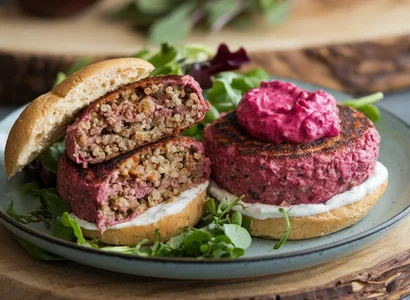
Day 5
Breakfast:
- Whole Grain Waffles with Almond Butter and Sliced Banana: Toast waffles and top with almond butter and banana slices and serve with a side of kiwi. (2 waffles, 1 medium kiwi, 1 tbsp almond butter, 1 banana)
Lunch:
- Lamb & Quinoa Burgers with Beetroot Tzatziki: Grill lamb burgers, serve on quinoa buns with beetroot tzatziki and include a side of tangerines. (4 oz lamb, ½ cup quinoa, 2 medium tangerines)
- Roasted Carrots and Parsnips: Roast carrots and parsnips with olive oil, salt, and pepper until golden and tender and pair with a side of watermelons. (1 cup carrots, 1 cup parsnips, 1 tbsp olive oil, 2 slices watermelons)
Dinner:
- Skillet Steak with Mung Beans, Broccoli with Mushroom Sauce: A hearty skillet meal combining steak, mung beans, and broccoli and serve with sliced kiwi (1 medium) for a refreshing boost of vitamin C. (4 oz steak, ½ cup mung beans, 1 medium kiwi)
- Tofu, Butternut & Mango Curry: Simmer tofu, butternut squash, and mango in a coconut curry sauce and include steamed broccoli drizzled with lemon juice for added vitamin C. (1 cup tofu, 1 cup butternut squash, ½ mango, 1 cup of broccoli)
Snacks:
- Chickpea Banana and Chocolate Slices: Blend chickpeas, banana, and dark chocolate, bake into bars. (½ cup chickpeas, 1 banana)
- Hard-Boiled Egg with a Squeeze of Lemon: A simple hard-boiled egg with a squeeze of fresh lemon juice. (1 egg, 1 lemon wedge)
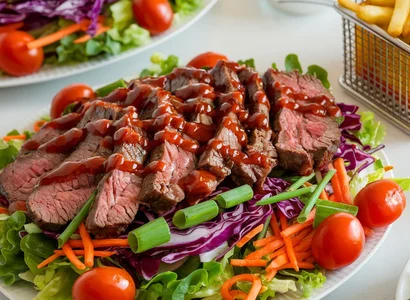
Day 6
Breakfast:
- Egg Muffins with Spinach and Peppers: Whisk eggs, mix with spinach and peppers, and bake in muffin tins and serve with sliced strawberries. Add a side of grapefruit segments. (2 eggs, 1 cup spinach, ½ bell pepper, 1 cup of strawberries, 1 medium grapefruit)
Lunch:
- BBQ Rainbow Beef Salad: Grill beef strips, toss with colorful vegetables, and top with BBQ sauce served with citrus salad with tangerine slices. (4 oz beef, 1 cup mixed vegetables, 1 medium tangerine)
Dinner:
- Grilled Beef Heart with Apple Chutney: Grill seasoned beef heart slices and serve with a homemade apple chutney made from cooked apples, onions, and spices and serve with sliced strawberries. (6 oz beef heart, 2 tbsp apple chutney, 1 cup of strawberries)
- Cashew Curry: Sauté cashews with curry spices, vegetables, and coconut milk for a creamy dish and pair with papaya chunks. (½ cup cashews, 1 cup vegetables, 1 cup of papaya)
Snacks:
- Ambrosia Gold Apple Oat No Bake Bites: Blend oats with Ambrosia apples and honey, roll into no-bake bites. (½ cup oats, 1 Ambrosia apple)
- Carrot and Cucumber Sticks with Hummus: Fresh carrot and cucumber sticks paired with hummus for a crunchy snack. (1 carrot, ½ cucumber, ¼ cup hummus)
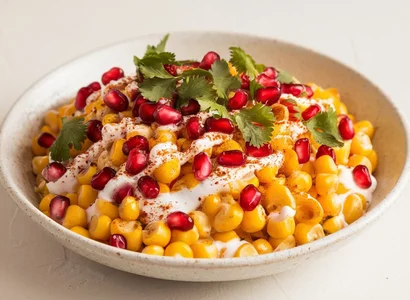
Day 7
Breakfast:
- Quinoa Breakfast Bowl with Chopped Dates and Sunflower Seeds: Serve cooked quinoa with chopped dates, sunflower seeds, and a drizzle of peanut butter and add kiwi slices. (½ cup quinoa, 1 tbsp sunflower seeds, 1 tbsp peanut butter, 1 medium kiwi)
Lunch:
- Chicken Liver Pâté: Blend cooked chicken liver with herbs and spices, serve with whole grain crackers and serve with sliced bell peppers. (4 oz chicken liver, 2 whole grain crackers, 1 cup of bell pepper)
- Chicken Broth: Simmer chicken bones with garlic, onions, carrots, and celery to make a flavorful broth and pair with a side of sliced orange. (2 cups chicken broth, 1 medium orange)
Dinner:
- Corn and Pomegranate Chaat: Toss corn, pomegranate seeds, and spices for a refreshing, iron-rich salad with melon cubes (1 cup corn, ½ cup pomegranate seeds)
Snacks:
- Green Apple Oat Bars: A chewy oat bar made with a fresh green apple. (½ cup oats, 1 green apple)
- Zucchini Picnic Muffins: Whisk eggs with grated zucchini and cheese, and bake in muffin tins for savory muffins. (1 cup zucchini, 2 eggs)
How to Treat Anemia with Diet
Treating anemia with diet involves a thoughtful approach to incorporating iron rich foods, enhancing absorption with vitamin C, and being mindful of inhibitors.
Here are some tips on how to treat anemia with diet:
- Incorporate iron-rich foods: Focus on both heme and non-heme iron sources. Include red meat, poultry, seafood, legumes, tofu, nuts, seeds, and whole grains in your meals.
- Pair iron-rich foods with vitamin C: Vitamin C enhances iron absorption. Try adding lemon juice to your spinach salad or having orange slices with your iron-fortified cereal.
- Use cast-iron cookware: Cooking with cast iron can increase the iron content of your food, especially when preparing acidic dishes like tomato sauce.
- Limit iron inhibitors: Avoid consuming dairy products, tea, coffee, and red wine around meals, as they can hinder iron absorption.
- Boost your intake of B vitamins: Include sources of B12 and folate, such as eggs, dairy, leafy greens, and fortified cereals, to support red blood cell production.
- Monitor portion sizes and meal frequency: Eating smaller, more frequent meals can optimize nutrient absorption. Include iron-rich foods and vitamin C in each meal.
- Stay hydrated: While hydration is key, limit excessive tea or coffee intake that may inhibit iron absorption. Opt for water and herbal teas instead.
Iron Supplements for Anemia
While an anemia diet should be your primary focus, iron supplements can be a valuable part of managing anemia, but it’s important to use them under the guidance of a healthcare provider to ensure safety and effectiveness.
Here are some of the best iron supplements for anemia:
- Ferrous Sulfate: This is the most commonly prescribed iron supplement. It contains approximately 20% elemental iron (about 65 mg of iron per 325 mg tablet).
- Ferrous Gluconate: A gentler option for those with sensitive stomachs. It contains about 12% elemental iron (approximately 36 mg of iron per 324 mg tablet).
- Ferrous Fumarate: Another common form that is well-absorbed. It contains about 33% elemental iron (approximately 106 mg of iron per 325 mg tablet).
- Carbonyl Iron: A newer type of iron supplement that is less likely to cause gastrointestinal issues. It typically contains about 100% elemental iron (usually sold in 45 mg doses).
- Heme Iron Polypeptide: Derived from hemoglobin, this type is generally more easily absorbed. Iron content varies by brand, typically around 11-30 mg of elemental iron per capsule.
Conclusion
Managing anemia through diet is a powerful and natural way to improve your health and boost iron levels.
By following this 7-day anemia diet plan and incorporating iron rich foods into your daily meals, you’re taking a significant step towards overcoming iron deficiency.
Be sure to combine iron-rich foods with vitamin C sources to enhance absorption. Avoid coffee or tea with meals, as they can interfere with iron uptake.
While diet plays a crucial role, it’s important to work closely with your healthcare provider to monitor your progress and adjust your treatment plan as needed.
They may recommend additional tests, iron supplements, or other interventions based on your individual needs.
Remember, consistency is key, and it may take several weeks to notice improvements in your symptoms.
- Mind diet for beginners
- 15 foods to avoid with gallbladder issues
- 7-day mediterranean diet meal plan
- Diet for type 2 diabetes
- 2 week zero sugar diet menu
- Does the oatmeal diet work?
- Low calorie high protein foods
- 25 foods to lower triglycerides
- 21 day Fix meal plan for beginners
- 7-day clean eating diet plan
- Foods good for endomorphs
- Gastritis diet meal plan
- 7-day meal plan for osteoporosis
- 7-Day Apple Cider Vinegar Cleanse
- 7-day meal plan for rheumatoid arthritis
FAQs
Which fruit is best for anemia?
Citrus fruits like oranges, grapefruits, and lemons are best for anemia due to their high vitamin C content, which enhances iron absorption. Other good options include strawberries, kiwis, and guavas.
Are eggs good for anemia?
Yes, eggs are good for anemia. They contain both iron and proteins that help in the formation of hemoglobin. However, you should limit egg consumption around meals since egg yolks contain a phosvitin that can bind to iron and reduce its absorption.
Is coffee good for anemia?
No, coffee is not good for anemia. Coffee contains compounds that can inhibit iron absorption. It’s best to avoid coffee or limit its consumption, especially around iron-rich meals.
What food is highest in iron?
Liver and other organ meats are the foods highest in iron. For plant-based options, legumes like lentils and soybeans, as well as dark leafy greens like spinach, are excellent sources of iron. However, always pair high-oxalate foods with vitamin C-rich foods to help boost iron absorption.
Are bananas high in iron?
No, bananas are not particularly high in iron. While they contain some iron (about 0.3 mg per medium banana), they are not considered a significant source compared to other foods.
Is pineapple high in iron?
Pineapple is not high in iron, containing only about 0.3 mg per cup. However, it’s an excellent source of vitamin C, which can help enhance iron absorption from other foods.
Is tuna high in iron?
Yes, tuna is relatively high in iron. A 3-ounce serving of canned tuna contains about 1.6 mg of iron, making it a good source of this essential mineral for those on an anemia diet.
Disclaimer: The information provided in this anemia diet plan is intended for educational purposes only and should not be used as a substitute for professional medical advice, diagnosis, or treatment.
Always consult with a healthcare provider or a registered dietitian for personalized iron rich foods and iron rich meals before making any changes to your diet.
